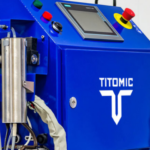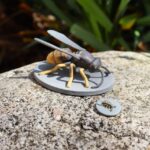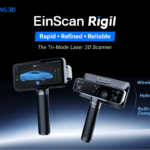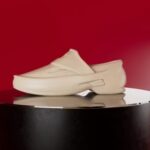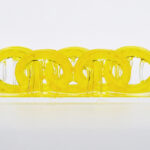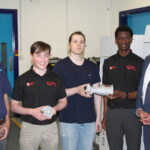Engineers from Belgium and Germany have successfully demonstrated the production and testing of a titanium slurry electrode, and have proven that it is a viable means of increasing the peak current density when compared to traditional manufactured solutions.
The findings have been published in the ChemElectroChem journal this week.
Read on to learn more about the research.
Slurry Electrodes
A “slurry” electrode is named as such due to the conductive material being suspended in a liquid medium, similar to how solid particles are suspended in a liquid in a slurry.
In this case, the term “slurry electrode” is used because it describes the physical state of the electrode material, which is a mixture of solid particles (a conductive material such as graphite) suspended in a liquid medium (an electrolyte such as water). This is opposed to other types of electrodes, such as solid electrodes or liquid electrodes, where the electrode material is in a different physical state.
These types of electrodes are typically used in electrochemical systems where a liquid medium is needed for the electrochemical reaction to take place, such as in fuel cells, batteries, and electroplating processes. In the case of this research project, the application was the production of a vanadium redox flow battery (VRFB).

They are typically used in conjunction with a current collector, which helps to transfer the electrical charge from the electrode to the other parts of the system. The complex flow distributor is used to improve the charge transfer between the current collector and the slurry particles.
The researchers stemmed from multiple institutes including the DWI-Leibniz Institute for Interactive Materials, University of Antwerp, and RWTH Aachen University, used indirect 3D printing to fabricate flow distributors for use in the VRF. Use of AM enabled them to produce the twisted geometry you see in the picture above.
Indirect 3D Printing
A VRFB is a type of flow battery that uses vanadium ions in different oxidation states to store energy. Carbon-based paper or felt electrodes are commonly used in commercialized VRFBs. The researchers replaced these with slurry electrodes by integrating 3D-printed static mixers (SMs) into the flow channels of the battery to improve the charge transfer between the current collector and the slurry particles.
The SM were molded, and the molds were first printed with a consumer-grade FDM system, using an off-the-shelf soluble filament.
The molds were then filled with a paste, consisting of 79.4% titanium powder, 9% epoxy and 11.6% glycerol.
After 3 hours of curing at 40°C, the mold was dissolved in toluene and the non-conductive titanium static mixers (TiSM) were formed.
Finally, a two-step process was applied to remove the binder and make the titanium particles conductive. This process included heating the TiSM at 600°C for 60 minutes and then heating it again at 1000°C for 60 minutes under argon gas. The TiSM samples were then coated with graphite by spraying it evenly on both sides and then dried in a vacuum oven at 30°C.
Integration into Battery
The SMs were integrated into the VRFB, as you can see in the graphic below.

Various tests were carried out on the electrodes, and cyclic voltammetry analysis showed that up to seven layers of graphite spray could be applied before the delamination and surface deformations occurred.
Consecutively, the graphite surface treatment on the TiSM electrode was shown to result in a three times higher peak current density in the positive electrolyte and two times higher peak current densities in the negative electrolyte.
The study suggests that the role of a static mixer for using slurry electrodes in a redox flow cell, can improve charge transfer from the current collectors to the particles.
Vanadium redox flow batteries have several advantages over other types of batteries, including long cycle life, high energy efficiency, and the ability to store large amounts of energy. They are also non-flammable, non-explosive, and have a wide temperature range of operation. These characteristics make them suitable for use in large-scale energy storage applications, such as grid-scale energy storage and renewable energy integration.
The findings of the research could lead to the potential developments in better rechargeable batteries of this type.
You can read the full research paper, titled “Titanium-Based Static Mixer Electrodes to Improve the Current Density of Slurry Electrodes” over at this link.



